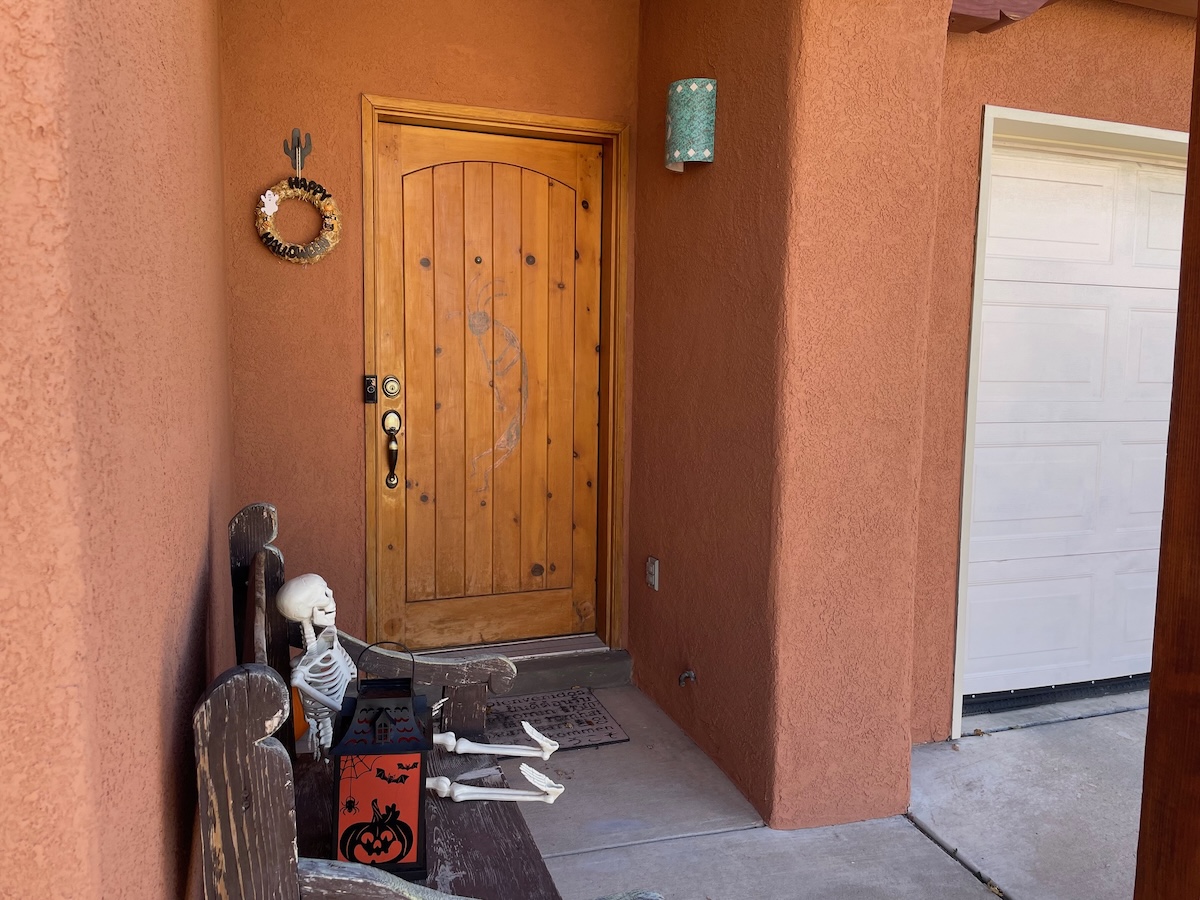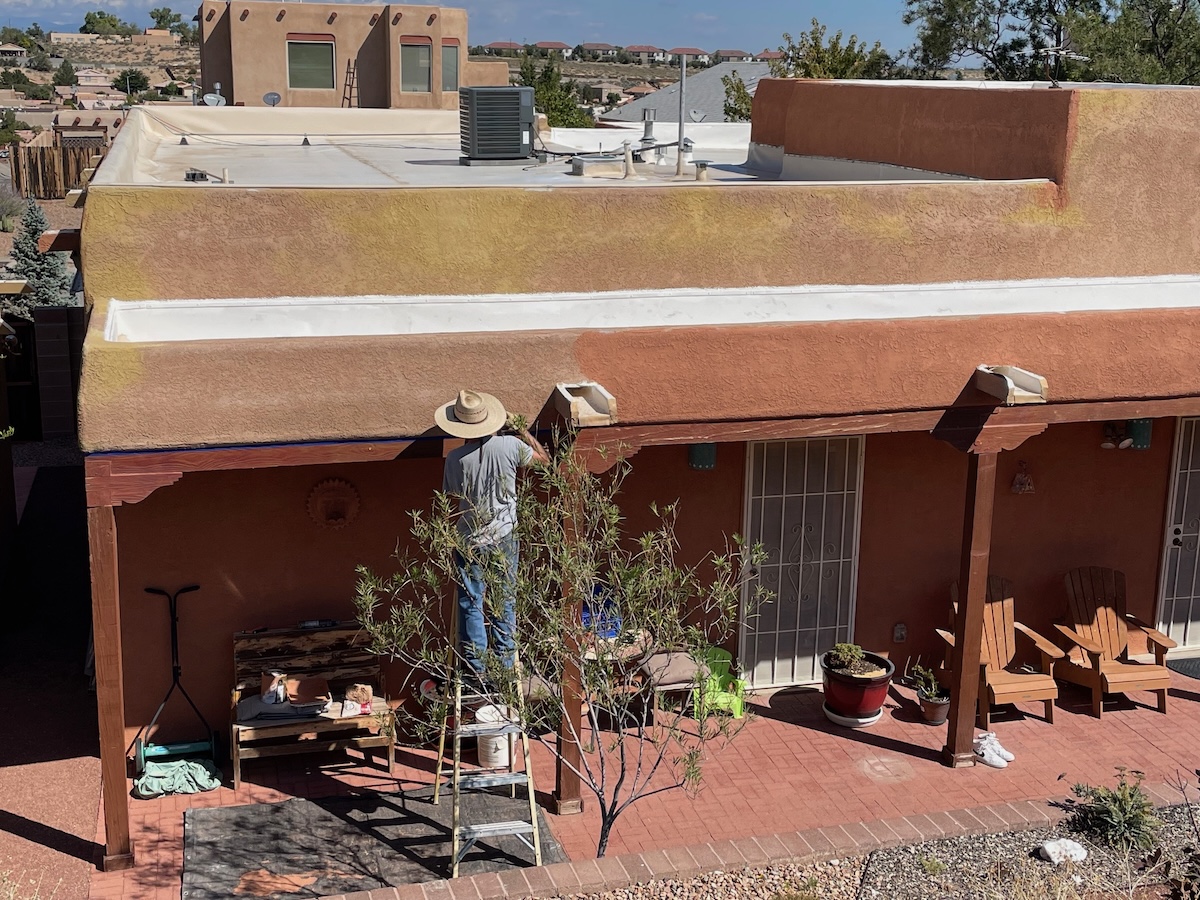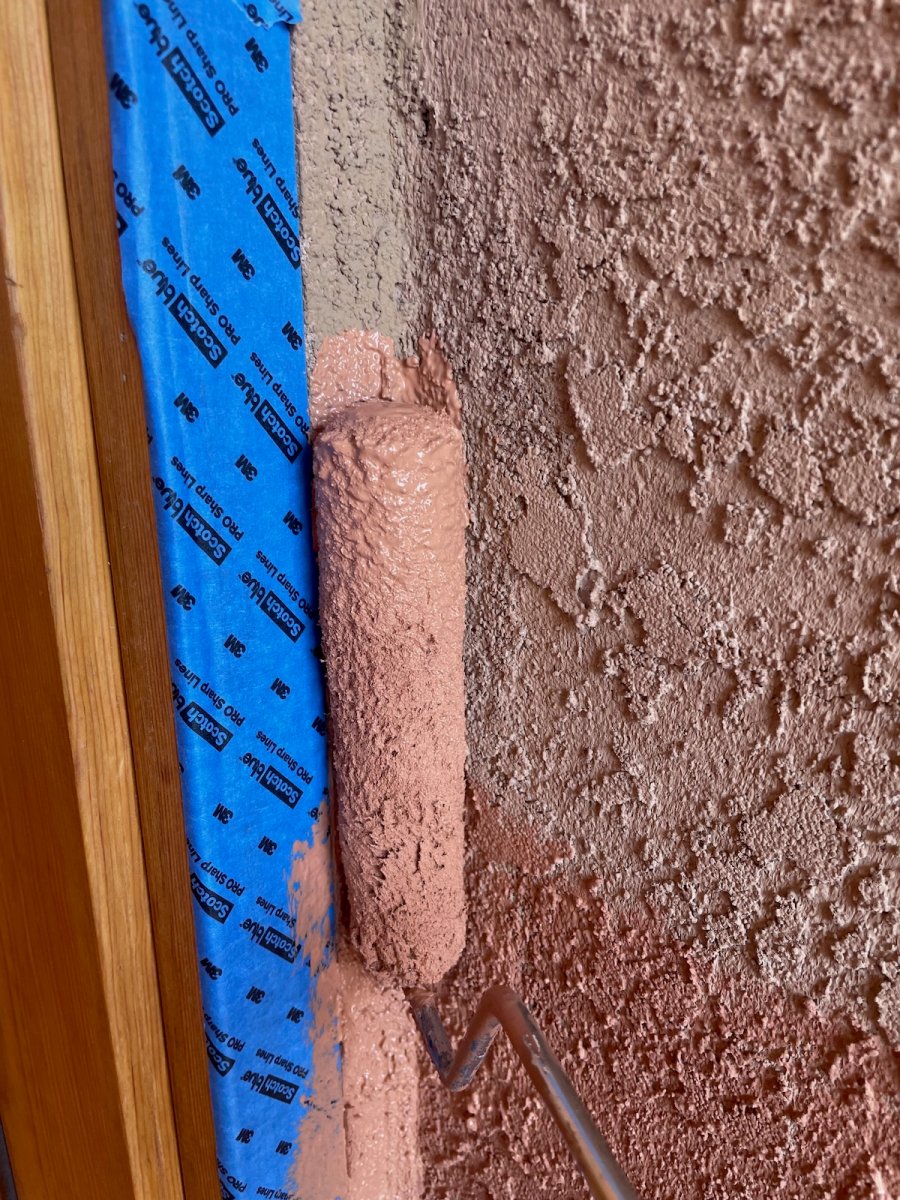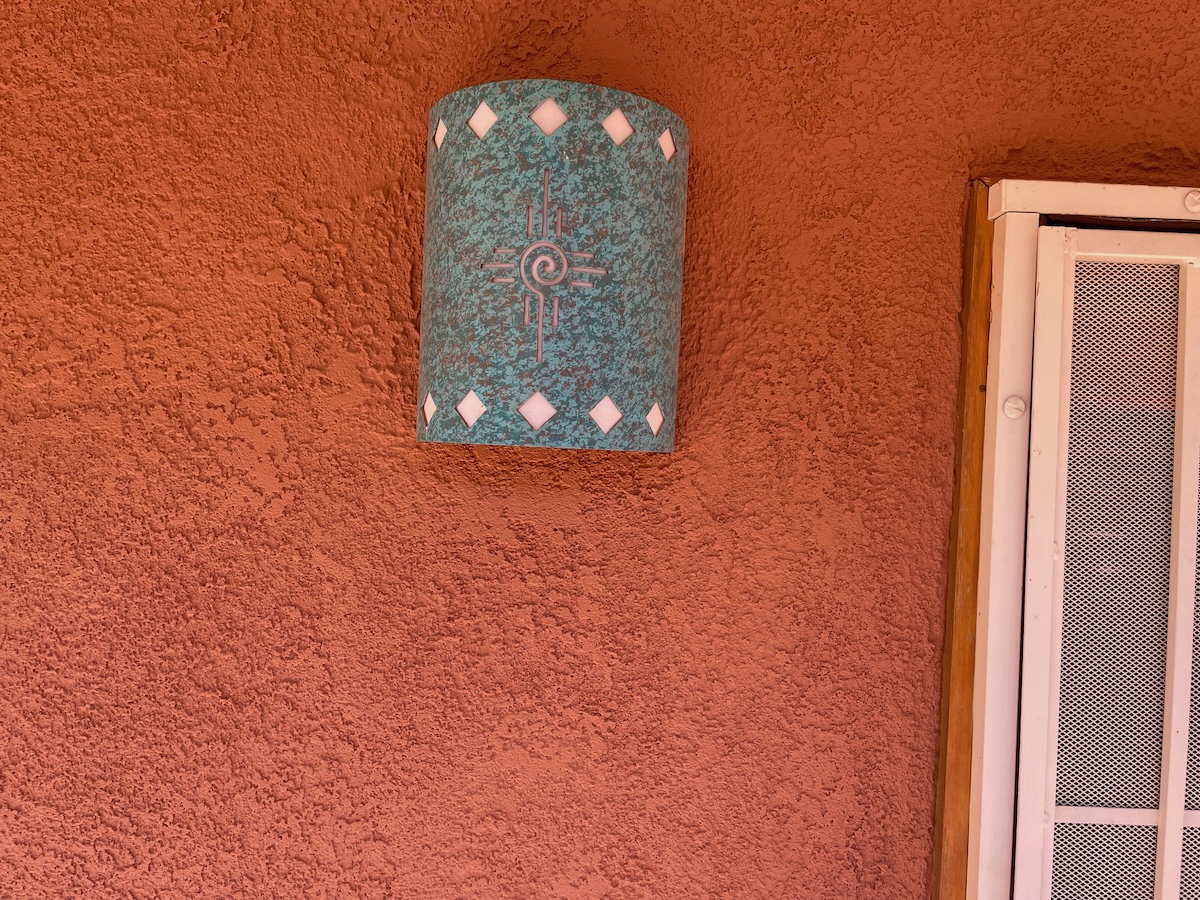

We may earn revenue from the products available on this page and participate in affiliate programs. Learn More ›
We’ve repainted stucco walls on a previous home, where the afternoon sun and some messy birds faded or stained the surface. It was an easy job, since the previous owners had left a paint can for the color match and the surface was relatively smooth (as stucco goes). But when we moved to our current home, we failed to notice that whoever painted or repaired its stucco surface had not matched the original color well. And when we had windows replaced, the company’s match was closer but added a third color.
The National Association of Home Builders reports that In 2023, stucco was the most common siding material for new home exteriors in the Pacific, Mountain, and South Atlantic areas of the country. Many people (including some of our curious neighbors) think you cannot repaint stucco. But in the dry Southwest climate where I live, you can paint over stucco provided it’s in good shape. In general, we found that this foray into painting stucco was not as easy as our previous success, so I’m sharing some lessons learned from our experience, along with input from professional painters.

Before repainting stucco, honestly assess the surface.
We considered our problem mostly aesthetic to correct the patchwork of colors on our home’s stucco exterior. But we did not do an adequate job of assessing the stucco’s quality and rough texture before starting. “First, wipe your hand over the surface to check for chalk,” says Kelly Mardis, owner of Marcel Painting in Phoenix, Arizona.
We didn’t get chalk, but there were some looser chunks in the texture we didn’t notice until we started painting. We noted and repaired hairline cracks, but these are common with stucco, says Gilberto Rodriguez, owner of GRH Painting LLC in Milwaukee, Wisconsin.
Our biggest mistake was in underestimating the roughness of our stucco’s texture, which is likely a recoating. It’s so thick that it holds numerous cavern-like holes running under peaks of material, which made it very difficult to get paint onto the entire surface. As a result, we had to change some of our typical painting process, use lots more effort, and go through more paint than we expected to need. So a stucco’s texture and integrity are big considerations when estimating costs and time, plus when determining whether you want to tackle the stucco painting yourself.
Look for these signs of substrate concerns.
Chalking is one indication of trapped moisture, says Danny Niemela, vice president and CFO of ArDan Construction in Scottsdale, Arizona. I asked him how a homeowner can know if it’s OK to paint a stucco home instead of having a pro repair and restucco it. “I would say nine times out of 10 the answer lies in the substrate’s condition,” said Niemela. “A good ol’ spray-down with a garden hose can tell you a lot,” he says.
According to the professional painters I spoke with, signs of poor substrate include:
- Patches of beading water after the spray-down, which indicates sealant or waxy residue that paint won’t adhere to in the long term.
- Chalky dust.
- Crumbling when you push on or rub against the surface.
- Large areas that produce hollow or drum-like sounds when you tap on the wall, which indicates the stucco is not tightly secured to its base surface.
- Areas that feel soft when you press on them.
- Cracks or damage along large swaths of the wall.
- Large cracks that are deep and extend for a foot or more.
If the base of the stucco is bad, painting over it is wasted money, says Niemela. However, it’s also not likely to hold up to a new stucco layer above it, which means you’d need a stucco professional to remove the base layer and then restucco. If unsure, have a stucco professional or a painter with experience with painting stucco assess it for you.

Expect to pay much more for paint than estimated.
We opted for an acrylic exterior paint from Sherwin-Williams. Before buying paint, I did some online searches to estimate how many gallons we would need and thought 7 or 8 gallons would account for the stucco texture and size of our home. I might have failed to account for some height differences and wall surfaces on the roof, but even with that, we required way more than the recommended near doubling of the square foot coverage for a typical smooth wall. In fact, we are at 22 gallons and might need 1 or 2 gallons more to complete the job.
We attribute the difference to the rough texture. Although we technically have applied one coat only, ensuring full coverage has required multiple angles of back-rolling or dabbing brushes and rollers multiple times and directions over much of the surface. We also have had to go back and hit missed spots after the sun exposed them.
We skipped more expensive elastomeric paint, which paint stores might recommend. The paint has additives that form a waterproof coat, which Niemela likens more to a liquid membrane than a paint layer. Mardis adds: “Elastomeric paint does not breathe. Acrylic paints allow moisture to escape, preventing the paint from peeling.” Elastomeric paint might work in highly humid regions, but is more of a liability (and cost) in our dry climate.
Painting still costs less than resurfacing.
A pro probably would have used less paint than we did to cover the surface, but we would have had to pay for labor. Still, even hiring a pro to paint stucco costs much less than restuccoing. Rodriquez says his company charges from $3,000 to $8,000 for stucco painting, depending on a home’s size. “The surface texture often requires more paint and specialized techniques,” adds Rodriguez, which “costs more compared to painting other common surfaces like vinyl siding.” Niemela estimates stucco painting jobs cost “$1.50 to $3 per square foot for pro labor and materials,” so the final cost depends on the home’s size.
In comparison, “resurfacing can start at $10,000 or more,” to replace stucco on an entire home, says Rodriguez. Niemela estimates $8 to $15 per square foot for full demo and reapplication of stucco. “That is thousands of dollars more, which is why honest assessment before starting is so critical,” he says.
This is not an easy job.
I won’t say we regretted taking on our stucco painting as a DIY task; in many ways, it has been a satisfying experience. But I wish we had more thoroughly assessed the stucco’s integrity and texture before starting. “Homeowners tend to undervalue how much time and money bad prep work costs down the road,” says Niemela. That includes cleaning and patching stucco as needed before starting.
A tough surprise for us was the difficulty of rolling paint onto our home’s highly uneven surfaces, especially when working at heights, for example. We originally thought we could easily hit high spots with an extension pole on the roller, but it is tough to get the grip and force needed, plus it’s hard to see how well the paint is covering from several feet below. That meant more time on ladders, which “a professional knows how to do safely,” says Rodriguez.
We could have tried purchasing or renting a paint sprayer, but again, those tools are better controlled by professional painters. Niemela uses an airless sprayer at 2,500 pounds per square inch (PSI), “which shoots paint into the crevices quickly.” But he says the sprayers cost $700 and up, and you need the proper tips and a spray shield to block overspray, along with a second person to backroll the sprayed paint while it still is wet to prevent paint from resting on high spots and missing low ones.
“Stucco is perhaps one of the most challenging materials to paint.”
Gilberto Rodriguez, GRH Painting LLC

Balance your DIY skills before beginning.
We had experience painting stucco, although on a smoother and smaller surface, and felt comfortable we could handle the job. Repainting patches or a single wall is not as overwhelming as painting an entire house exterior. According to Mardis, stucco painting “requires skill and knowledge to perform the job correctly. It depends on your comfort level.” Niemela adds that spraying is “nigh impossible for beginners since overlap lines and inconsistent thickness can make the house an eyesore.”
“Stucco is perhaps one of the most challenging materials to paint,” says Rodriguez. He and Niemela agree that it requires special tools and techniques, plus lots of time. For that reason, not every painter paints stucco homes, adds Rodriguez. He says he is honest with homeowners when assessing whether their stucco is OK to paint instead of replace.
We learned these tips for repainting stucco.
Even if you only need to patch a small area or repaint a single wall, these tips can help the job go more smoothly.
- Experts recommend a thorough pressure wash of the surface and letting it dry completely before painting.
- I saw varying info on priming, but we felt there was no need to prime our already-painted surface.
- Mardis says that copious amounts of chalk require power-washing followed by priming with a product like Seal-Krete before painting.
- Apply primer over any patches you make with caulk or stucco patch.
- Try to make all crack repairs first, since the repair medium needs time to dry.
- Ask for sample sizes to test your color in several spots and light conditions before buying the paint.
- Use a thick nap roller for rough surfaces like stucco; Niemela recommends 1¼ inch roller covers, working in two directions to force paint into low spots.
- Personally, I preferred working with mini rollers (6½ inch long) with ⅜ inch nap, since they were easier for me to control. I could push them into crevices more easily and with less arm fatigue.
- Stucco messes up brushes even though we used quality synthetics. You can’t cut in on stucco like you can with traditional smooth surfaces, but keep a few brushes on hand for tight spots and touch-ups.
- I also used the mini roller where I normally would use a brush, such as in corners or along the bottom of the walls by simply pressing it into place and rolling upward. I held a barrier such as a large flat trowel or a piece of thin cardboard between the roller and the ground to keep it as clean as possible.
